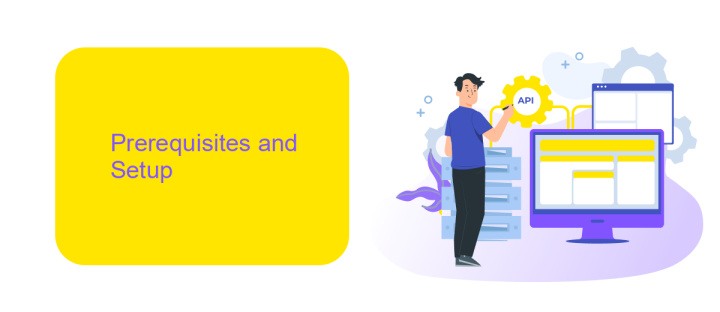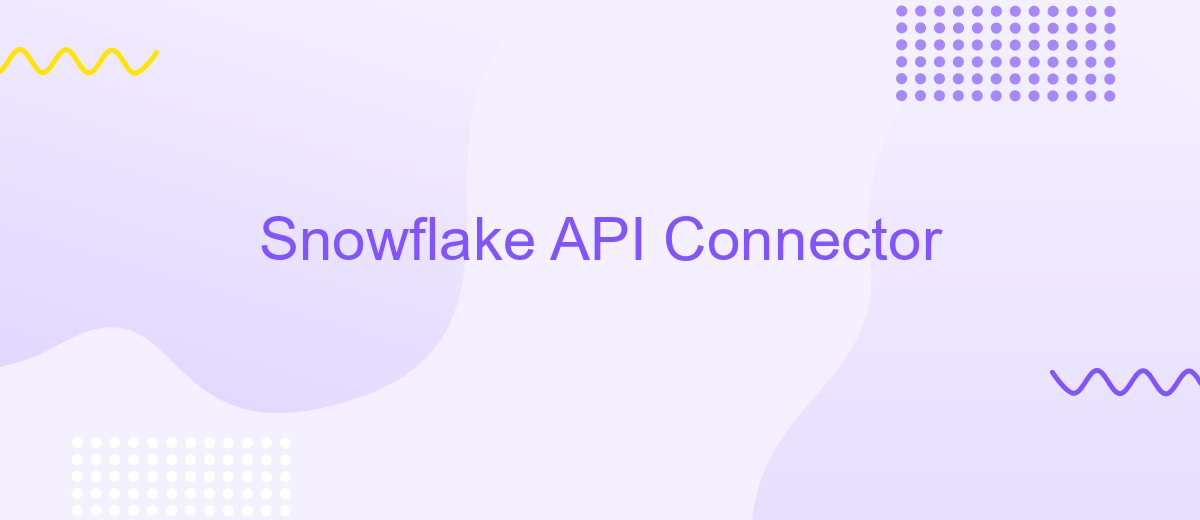Snowflake API Connector
The Snowflake API Connector is a powerful tool that enables seamless integration with the Snowflake data platform, allowing businesses to effortlessly access, manage, and analyze their data. By providing a robust interface for data interaction, this connector simplifies the process of connecting various applications and services to Snowflake. With its user-friendly design and comprehensive functionality, the Snowflake API Connector is essential for organizations looking to optimize their data workflows and enhance operational efficiency.
Introduction to Snowflake API Connector
The Snowflake API Connector is a powerful tool designed to facilitate seamless interaction between your applications and the Snowflake data platform. By leveraging this connector, developers can efficiently manage data operations, automate workflows, and integrate Snowflake's robust data capabilities into their existing systems. This API provides a standardized way to connect, ensuring secure and scalable data access, which is crucial for modern data-driven applications.
- Streamline data integration processes with minimal coding effort.
- Enhance data security through advanced authentication methods.
- Enable real-time data processing and analytics.
- Support for various programming languages and platforms.
Utilizing the Snowflake API Connector allows organizations to unlock the full potential of their data infrastructure. With its extensive features and user-friendly interface, businesses can achieve greater agility and insight into their data operations. Whether you're building complex data pipelines or simple data retrieval tasks, the Snowflake API Connector provides the necessary tools to optimize performance and drive innovation. Embrace this technology to enhance your data strategy and stay ahead in the competitive landscape.
Prerequisites and Setup

Before diving into the Snowflake API Connector, ensure you have a Snowflake account with the necessary privileges to access and manage data. It's crucial to have a fundamental understanding of Snowflake's architecture and SQL to effectively utilize the API. Additionally, make sure you have a secure environment set up for API operations, including a reliable internet connection and a system capable of running API requests. Familiarize yourself with RESTful API concepts, as the Snowflake API operates on these principles.
To streamline the integration process, consider using a service like ApiX-Drive. This platform simplifies connecting Snowflake with various applications, automating data workflows without requiring extensive coding knowledge. Sign up for ApiX-Drive and explore its Snowflake integration options to facilitate seamless data exchange. Ensure your API keys and tokens are securely stored and accessible only to authorized personnel. Finally, review Snowflake's API documentation for detailed guidance on endpoints, authentication, and error handling to ensure a smooth setup and operation.
API Reference

The Snowflake API Connector allows developers to seamlessly integrate Snowflake's robust data warehousing capabilities into their applications. This API provides a comprehensive set of endpoints that enable efficient data manipulation, querying, and management. With secure authentication and detailed documentation, developers can quickly leverage Snowflake's power to enhance their data-driven solutions.
- Authentication: Utilize OAuth 2.0 for secure access. Obtain tokens via client credentials.
- Data Querying: Execute SQL queries using the /query endpoint. Supports both synchronous and asynchronous modes.
- Data Management: Perform CRUD operations on tables with endpoints like /insert, /update, and /delete.
- Monitoring: Access usage metrics and logs through the /monitor endpoint for performance insights.
- Error Handling: Comprehensive error codes and messages help diagnose and resolve issues effectively.
By leveraging the Snowflake API Connector, developers can ensure their applications are both scalable and efficient. The API's design prioritizes ease of use and flexibility, allowing teams to focus on building features rather than managing infrastructure. Whether you're extracting insights or managing large datasets, the Snowflake API Connector is an essential tool for modern data applications.
Usage Guide

The Snowflake API Connector is an essential tool for developers looking to integrate Snowflake's data capabilities into their applications seamlessly. To get started, ensure you have the necessary API credentials, including your account identifier, username, and password. These credentials are crucial for establishing a secure connection to your Snowflake instance.
Once your credentials are ready, configure your environment to support API requests. This involves setting up your programming language's HTTP client to handle requests and responses efficiently. Familiarize yourself with Snowflake's API documentation to understand the available endpoints and their parameters.
- Authenticate using your API credentials to obtain an access token.
- Use the access token to make authorized requests to the Snowflake API.
- Handle API responses, ensuring error handling and data parsing are implemented.
- Test your integration thoroughly to ensure reliability and performance.
By following these steps, you can leverage the Snowflake API Connector to enhance your application's data processing capabilities. Remember to adhere to best practices for security, such as rotating your credentials regularly and monitoring API usage to prevent unauthorized access.
- Automate the work of an online store or landing
- Empower through integration
- Don't spend money on programmers and integrators
- Save time by automating routine tasks
Troubleshooting
When encountering issues with the Snowflake API Connector, first ensure that your API credentials are correctly configured. Double-check the API key and secret, as these are common sources of connection problems. Additionally, verify that your network settings allow outbound connections to Snowflake's servers. If you are using a proxy, ensure it is properly configured to handle API traffic. Always refer to the official Snowflake documentation for any specific requirements or updates that might affect your connection.
If the issue persists, consider using integration platforms like ApiX-Drive. These services can simplify the integration process by providing pre-configured connectors and automated workflows. ApiX-Drive, for instance, offers a user-friendly interface that helps in mapping fields and managing data transfers, which can help identify and resolve data mismatches or formatting errors. If your problem is related to data synchronization, using such a platform can offer insights through detailed logs and error reports, aiding in quicker troubleshooting. Always ensure that your Snowflake instance is up-to-date to prevent compatibility issues with third-party services.
FAQ
What is Snowflake API Connector?
How do I authenticate with the Snowflake API?
What are the common use cases for using a Snowflake API Connector?
How can I automate data integration with Snowflake?
Is it possible to connect Snowflake with non-SQL applications using the API?
Apix-Drive is a universal tool that will quickly streamline any workflow, freeing you from routine and possible financial losses. Try ApiX-Drive in action and see how useful it is for you personally. In the meantime, when you are setting up connections between systems, think about where you are investing your free time, because now you will have much more of it.


